Nasal Spray Selector Tool
Find Your Perfect Nasal Spray
Answer a few questions to get personalized recommendations based on your allergy symptoms, budget, and health considerations.
Your Priority
Your Considerations
Personalized Recommendations
Your selections:
Pro Tip: Always consult your GP for personalized medical advice, especially for children or if you have underlying health conditions.
Finding the right nasal spray can feel like a maze, especially when you’ve heard about Astelin (azelastine) and wonder how it stacks up against the crowd. This guide breaks down the science, the pricing, and the everyday experience of Astelin and its most popular alternatives so you can pick the one that actually works for you.
Key Takeaways
- Azelastine is an antihistamine nasal spray that starts easing symptoms in minutes, but it may cause a mild bitter taste.
- Corticosteroid sprays (fluticasone, budesonide, mometasone, triamcinolone) take longer to work but generally provide stronger, longer‑lasting relief.
- Combination spray Dymista gives the fast onset of azelastine plus the anti‑inflammatory power of a steroid, at a higher price.
- Prescription requirements, cost, and side‑effect profiles differ across the board; your health history and budget matter most.
- Proper technique-tilting the head, sniffing gently-makes any spray more effective.
What Is Astelin (Azelastine)?
Astelin is a prescription nasal spray that contains azelastine hydrochloride, a second‑generation antihistamine. It works by blocking histamine receptors in the nasal lining, stopping the itchy, watery reaction that comes with allergic rhinitis. Because it targets the histamine pathway directly, users often notice relief within 5‑15 minutes, making it one of the fastest‑acting options on the market.
Typical dosage is one or two sprays per nostril once or twice daily, depending on severity. The spray bottle delivers a fine mist that coats the nasal mucosa without overwhelming the tissue.
How Do Other Nasal Sprays Compare?
Most alternatives belong to the corticosteroid family, which reduces inflammation rather than just blocking histamine. Below are the most common contenders:
- Flonase (fluticasone propionate) - a steroid that eases swelling and mucus production.
- Nasacort (triamcinolone acetonide) - another steroid with a slightly lower cost in the UK.
- Rhinocort (budesonide) - praised for a gentle scent and low systemic absorption.
- Nasonex (mometasone furoate) - a potent steroid often recommended for severe cases.
- Dymista - a combination spray that blends azelastine with fluticasone, offering both fast relief and long‑term control.
Side‑Effect Snapshot
Even the best‑selling sprays can cause irritation. Here’s what you might experience:
- Astelin: mild bitter taste, occasional nosebleed, transient drowsiness.
- Flonase/Nasacort/Rhinocort/Nasonex: possible nasal dryness, sore throat, rare growth suppression in children.
- Dymista: combines the taste issue of azelastine with the mild burning sensation some feel from steroids.
Price & Prescription Landscape (UK)
All listed products require a prescription in the United Kingdom, but the cost after NHS reimbursement varies:
- Astelin: £17‑£22 for a 30‑day supply.
- Flonase (generic): £12‑£16.
- Nasacort: £11‑£15.
- Rhinocort: £13‑£18.
- Nasonex: £15‑£20.
- Dymista: £30‑£38 (higher due to dual‑active ingredients).
Detailed Comparison Table
| Product | Active Ingredient(s) | Class | Onset of Relief | Typical Duration | Common Side Effects | UK Price (30days) |
|---|---|---|---|---|---|---|
| Astelin | Azelastine HCl 0.1% | Antihistamine | 5‑15min | 12‑24h | Bittersweet taste, mild nosebleed | £17‑£22 |
| Flonase | Fluticasone propionate 0.05% | Corticosteroid | 12‑24h | 24‑48h | Nasal dryness, sore throat | £12‑£16 |
| Nasacort | Triamcinolone acetonide 0.055% | Corticosteroid | 12‑24h | 24‑48h | Nose irritation, headache | £11‑£15 |
| Rhinocort | Budesonide 0.03% | Corticosteroid | 12‑24h | 24‑48h | Mild burning, dryness | £13‑£18 |
| Nasonex | Mometasone furoate 0.05% | Corticosteroid | 12‑24h | 24‑48h | Thrush, nasal irritation | £15‑£20 |
| Dymista | Azelastine 0.1% + Fluticasone 0.05% | Antihistamine + Corticosteroid | 5‑15min (azelastine) | 24‑48h (combined) | Bittersweet taste, burning | £30‑£38 |
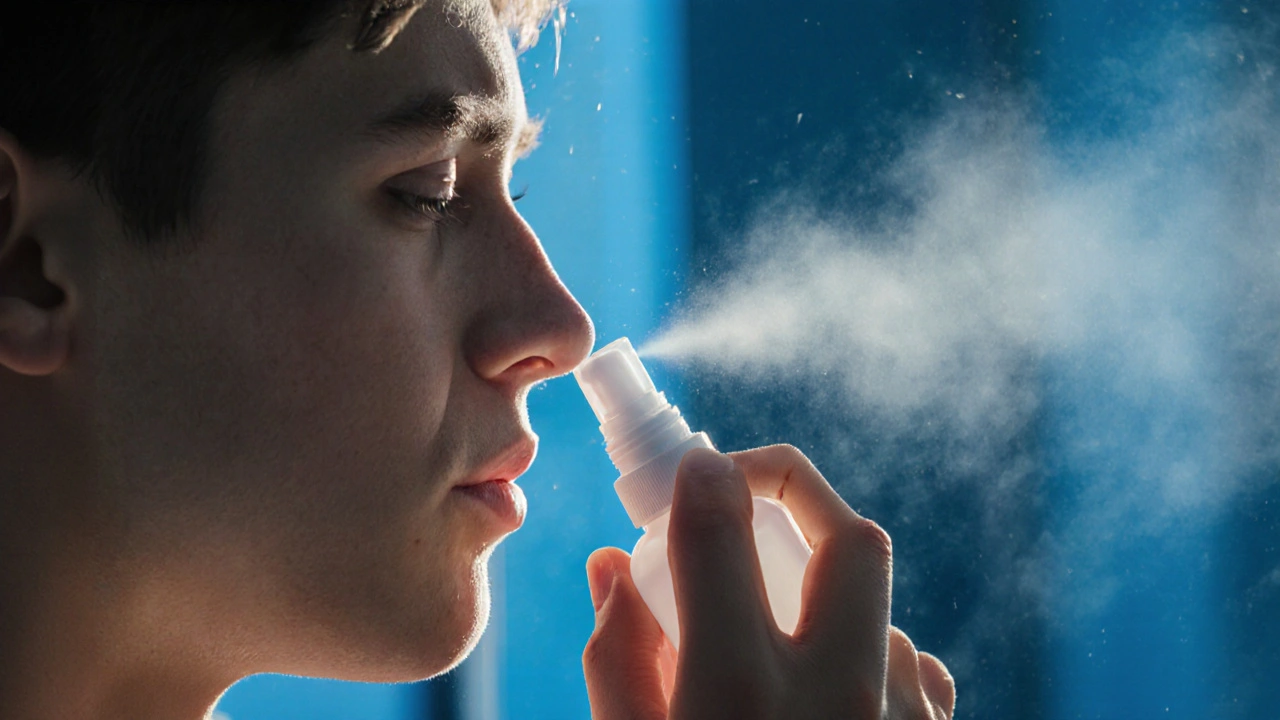
How to Choose the Right Spray for You
Think of the decision as matching a tool to a job:
- Fast symptom relief? If you need instant calm for sudden pollen spikes, Astelin or Dymista’s azelastine component is your best bet.
- Long‑term control? Steroid sprays (Flonase, Nasacort, Rhinocort, Nasonex) build up anti‑inflammatory effects over several days, ideal for chronic sufferers.
- Budget‑conscious? Generic steroids like Nasacort tend to be the cheapest while still delivering solid results.
- Kids or sensitive mucosa? Budesonide (Rhinocort) has the lowest systemic absorption, making it a safer choice for younger patients.
- Side‑effect tolerance? If the bitter taste of azelastine bothers you, stick with a pure steroid.
Always discuss these factors with your GP or pharmacist, especially if you have a history of glaucoma, cataracts, or are pregnant.
Practical Tips for Getting the Most Out of Any Nasal Spray
- Blow your nose gently before each use to clear excess mucus.
- Shake the bottle (if instructed) to ensure even distribution.
- Insert the nozzle just inside the nostril, tilt your head forward slightly, and spray while inhaling softly.
- Avoid sniffing hard right after; let the medication settle for 10‑15 seconds.
- Wash your hands after each application to prevent accidental eye irritation.
Frequently Asked Questions
Can I use Astelin and a steroid spray together?
Yes. Many clinicians recommend pairing an antihistamine spray like Astelin with a low‑dose steroid for both immediate relief and long‑term control. Space the doses by at least 30 minutes to avoid interference.
Is Astelin safe for children?
Astelin is approved for children 6years and older in the UK. Doses are typically lower, and a pediatrician should monitor for any irritation or taste issues.
How long should I wait before switching to a different spray?
Give a steroid spray at least 2‑3 weeks to show full effect. If you’re not seeing improvement after that period, talk to your doctor about trying a different molecule or adding an antihistamine.
Do nasal sprays interact with other allergy medications?
Generally, they’re safe to use alongside oral antihistamines or eye drops. However, combining multiple steroids can increase systemic exposure, so keep such combos under medical supervision.
What should I do if I experience a nosebleed after using a spray?
Stop the spray, apply gentle pressure to the soft part of the nose for 5‑10 minutes, and keep the nasal lining moist with saline spray. If bleeding persists, seek medical advice.
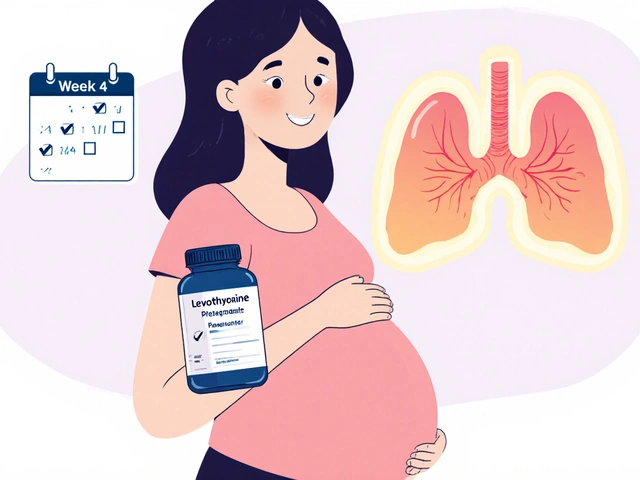
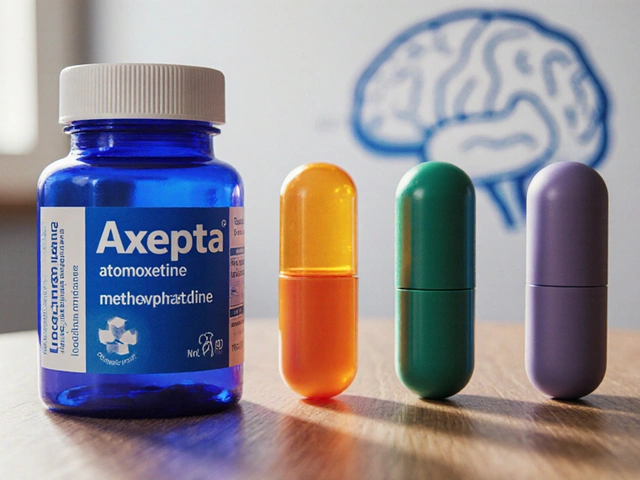
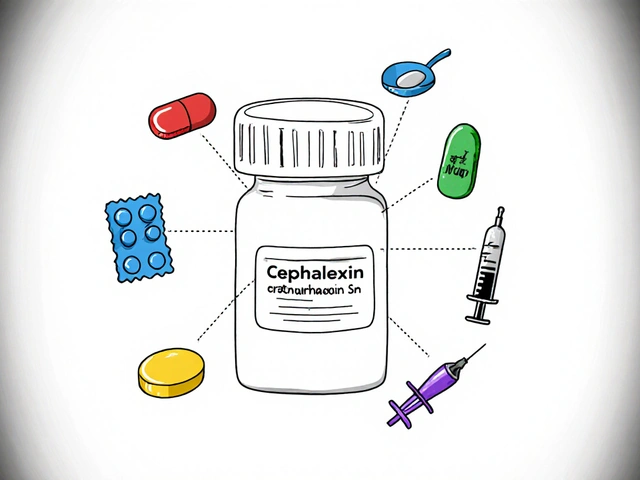
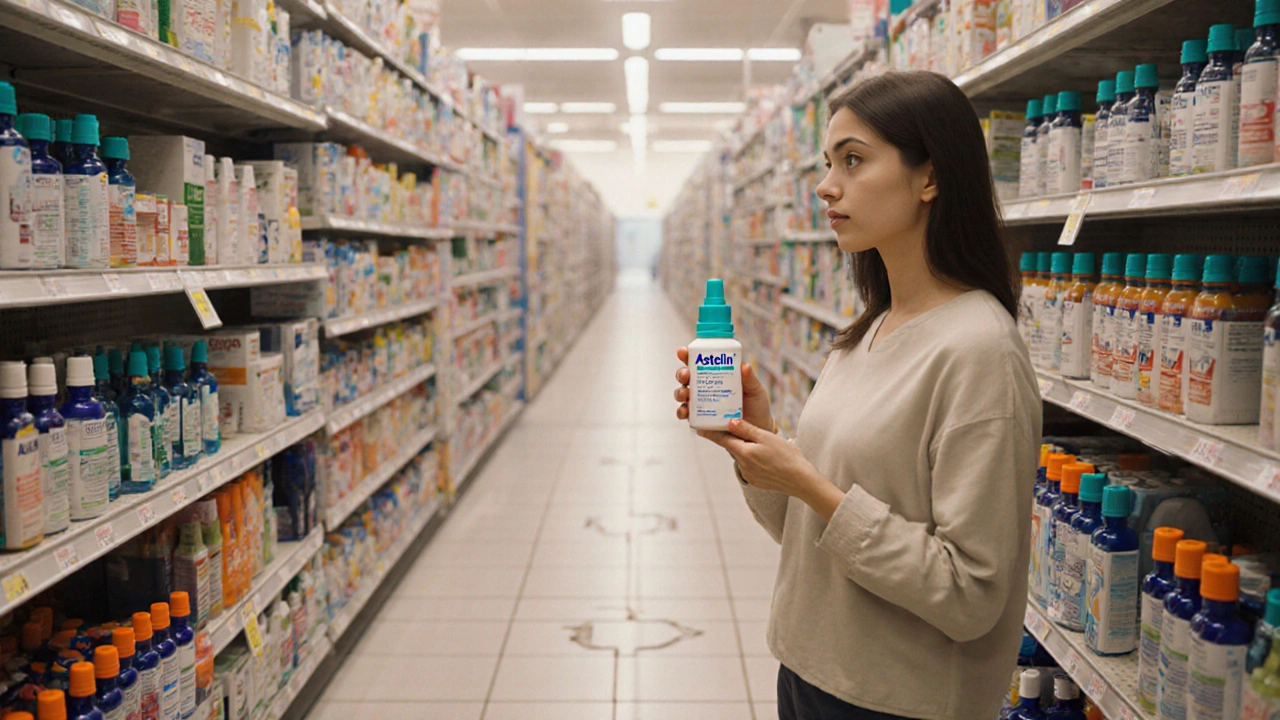
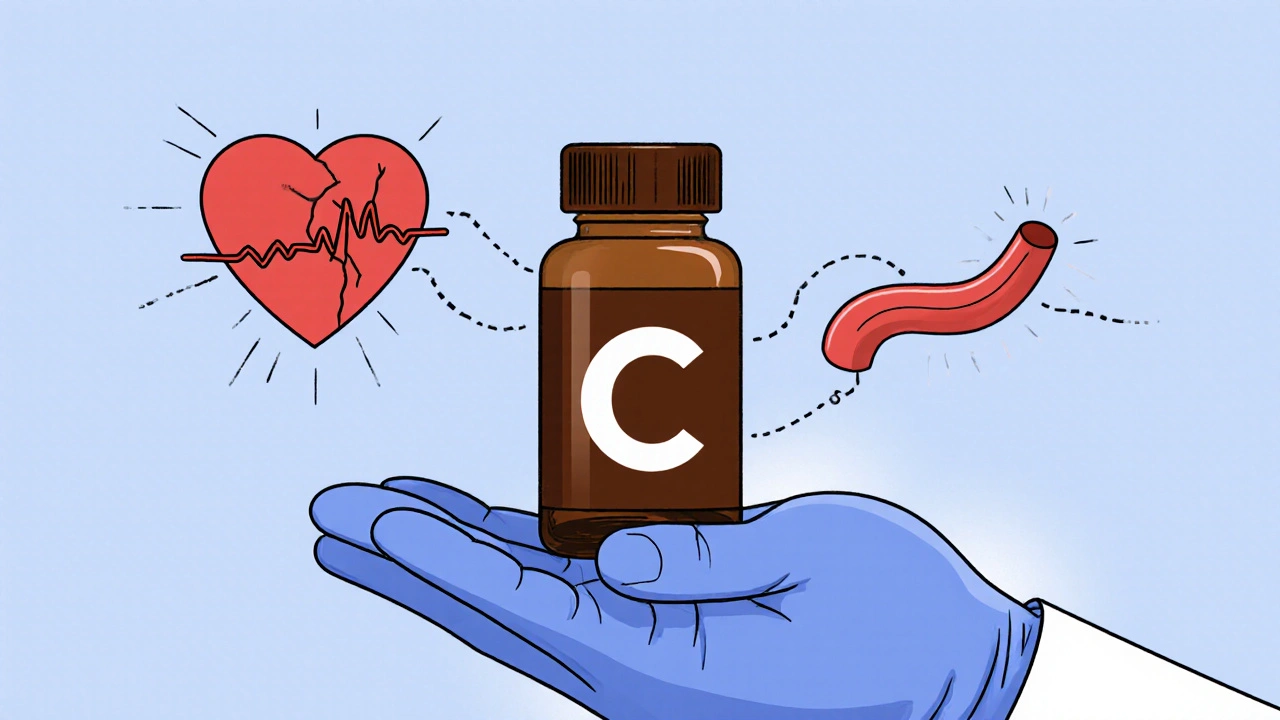
Comments
14 Comments
Nancy Chen
Ever wonder why the big pharma giants push Astelin like it's the holy grail? They love a bitter taste because it keeps us dependent, and the fast relief is just a smoke‑screen for their data‑mining schemes.
Don't be fooled – the cheap steroids are just as effective without the hidden agenda.
Jon Shematek
Yo, ditch the conspiracy chatter and grab the spray that actually works. Astelin gives you that instant kick, so you can get back to crushing your day without waiting forever.
Beverly Pace
It's morally questionable to rely on prescription-only meds when over‑the‑counter options exist. We should prioritize safer, non‑steroidal solutions unless a doctor explicitly deems them necessary.
RALPH O'NEIL
I see where you're coming from, but the data shows that antihistamine sprays like Astelin can reduce emergency visits for severe allergies. It's a trade‑off worth noting.
Mark Wellman
Alright, let me break this down for everyone who’s still scrolling past the tables and thinks a nasal spray is just a bottle of water. First off, Astelin’s got that azelastine punch, which means you feel relief faster than a cat on a hot tin roof – I’m talkin’ 5 to 15 minutes, not hours. Second, you’ve got the steroid crowd – Flonase, Nasacort, Rhinocort, Nasonex – they’re slower, but they build up a shield that lasts longer, kinda like building a wall instead of just putting a band‑aid on a cracked pipe. Third, the combo Dymista is like a double‑espresso for your nose, mixing the quick hit of azelastine with the long‑term calm of fluticasone, but it also hits your wallet harder than a late‑night pizza delivery – £30‑£38 ain’t cheap. Fourth, side‑effects vary: Astelin’s bitter taste can be a deal‑breaker for some, while steroids can dry out your nostrils or give you a sore throat, and in kids, there’s a tiny risk of growth suppression, which sounds scarier than it usually is but still worth a mention. Fifth, the UK prescription requirement means you can’t just walk into a pharmacy and grab 'em; you need a GP sign‑off, which adds a layer of bureaucracy that some folks find annoying. Sixth, price wise, generic steroids like Nasacort are the budget‑friendly champs at £11‑£15, while Astelin sits at £17‑£22, not the cheapest but not the most expensive either. Seventh, technique matters – you’ve gotta blow your nose, tilt your head forward, spray gently, and wait a few seconds before sniffing; otherwise you waste the medicine and get that weird drip. Eighth, if you’re dealing with kids under 12, budesonide (Rhinocort) is often recommended because it has low systemic absorption, making it a safer pick. Ninth, if you’re sensitive to taste, stick with a pure steroid and skip the azelastine unless you need that rapid relief for sudden pollen spikes. Tenth, always check with your doctor if you have conditions like glaucoma or cataracts because steroids can elevate intra‑ocular pressure. Eleventh, you can actually pair Astelin with a low‑dose steroid, spacing them out by at least 30 minutes, to get the best of both worlds – fast relief plus long‑term control. Twelfth, remember that nasal sprays don’t replace other allergy measures like avoiding triggers or using eye drops. Thirteenth, if you get a nosebleed, stop the spray, apply pressure, and keep the lining moist with saline. Fourteenth, keep your hands clean after each use to avoid eye irritation – you don’t want to end up rubbing your eyes and spreading the stuff. Fifteenth, if you’re on a tight budget, consider the long‑term steroid route; the upfront cost might be lower, and you won’t need to buy a new bottle every few weeks. Finally, stay consistent – steroids need a few weeks to show full effect, so don’t toss them after a couple of days thinking they’re useless. That’s the whole picture, no fluff.
Amy Morris
Reading that felt like a roller‑coaster of relief and caution – I totally get the anxiety of choosing the right spray, especially when every sneeze feels like a tiny tragedy.
Francesca Roberts
Congrats, you’ve just discovered the cheapest way to spend money.
Becky Jarboe
While the sarcasm is noted, let’s remember that proper nasal spray administration-technique optimization, dosing schedules, and adherence-acts as a form of self‑efficacy, which is vital for managing chronic allergic rhinitis and improving QoL.
Tyler Dean
They’re watching our noses, trust no one.
Susan Rose
Speaking of watches, it’s fascinating how different cultures view nasal health – in some places they use herbal steam, while in others they swear by prescription sprays. It shows there’s no one‑size‑fits‑all.
diego suarez
Overall, the choice comes down to personal needs: fast relief vs. long‑term control, budget vs. convenience. I recommend trying a generic steroid first if cost is a concern.
Eve Perron
Indeed, the decision matrix is multilayered; one must weigh onset time, side‑effect profile, pharmacoeconomic factors, and individual patient preferences, all while navigating the healthcare system’s procedural intricacies; furthermore, the importance of patient education cannot be overstated-proper inhalation technique, adherence, and monitoring for adverse events are essential components of effective therapy, and clinicians should foster an open dialogue to address concerns, especially regarding taste aversion or steroid‑related nasal dryness; in sum, a collaborative approach involving both prescriber and patient yields the most favorable outcomes.
Josephine Bonaparte
Quick tip: remember to use "its" for possession (the spray's design) and "it's" for the contraction (it is). Also, avoid "teh" in your posts – it looks unprofessional.
Meghan Cardwell
Great insights! Leveraging evidence‑based pharmacodynamics while keeping an eye on cost‑effectiveness can really streamline therapeutic decision‑making for allergic rhinitis.
Write a comment